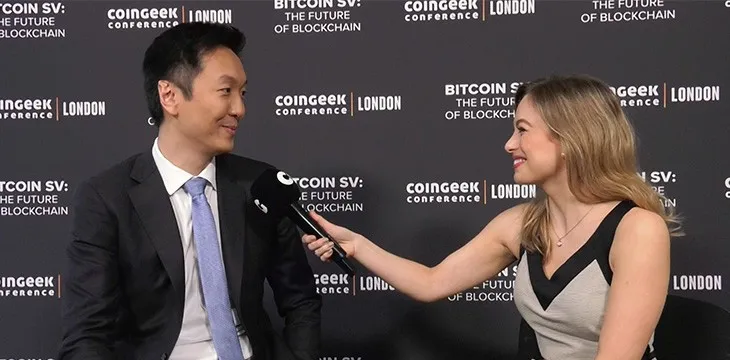|
Getting your Trinity Audio player ready...
|
In less than two years, Bitcoin SV (BSV) has done more to propel Bitcoin forward than other blockchains had done in ten. One of the main purposes of digital currency, as outlined in the original Bitcoin whitepaper, was to facilitate micropayment transactions to allow anyone, anywhere, to monetize their web-based content.
Jack Liu was one of the many who immediately understood the value BSV would have to global digital currency adoption and, since getting involved, has helped develop several key solutions, including RelayX and Float SV. Liu was on hand at the CoinGeek London 2020 conference, where he led a talk on what new developments are being seen, and where the various solutions are headed.
Float SV, a BSV exchange built on the OKNodes platform, has received a lot of interest since launching in 2019. In less than 10 months, it has already seen over 500,000 trades and continues to grow as BSV becomes increasingly popular. RelayX, a BSV wallet that is still under beta, already has more than 3,000 users and is integrated into popular apps such as Twetch, Paymail and others, and continues to push forward with new features not found anywhere else.
These are just two of the projects being worked on, but much more is coming. Liu has also helped establish Output Capital, an investment firm that targets BSV apps. As opposed to other investment offerings, Output Capital derives its returns strictly from transaction outputs. It also is designed to approve investments within no more than 72 hours, not three to six months like other investment solutions. This is due to the fact that the projects are being built on the blockchain, so all the details—everything needed to gauge the viability and progress of the development—can easily and quickly be gleaned without having to be pitched.
One of the major problems with the Internet today is that there is no way to manage micropayments. This means that there’s no incentive to provide quality content or to allow users to take advantage of their skills and talents to receive compensation. A micropayment solution, which is one of the core functions of BSV, opens up an unlimited number of revenue channels and will help ensure that the data available to netizens is legitimate, while allowing content providers to be paid for their work.
CoinGeek’s Hannah Jackson was able to steal Liu away for a few minutes to discuss his various projects and what is coming down the pipe. One of the biggest advances—for both RelayX and the entire digital currency ecosystem—is going to be the ability of the wallet to authorize any app, such as Twetch and others, right from the app, as well as to show transaction histories, payment requests, identities and more from those apps. It becomes an all-inclusive, multi-functional wallet that allows users to manage virtually all of their payment channels from a central location.
There is a lot of positive movement associated with BSV development currently underway, and more is constantly being seen. While many blockchain projects have become stagnant as they wait for another 2017 price explosion that won’t come, the BSV community is dedicated to providing real-world solutions that make blockchain adoption easy and worthwhile. With forward thinkers like Liu, this progress will continue well into the future.

 08-31-2025
08-31-2025 





